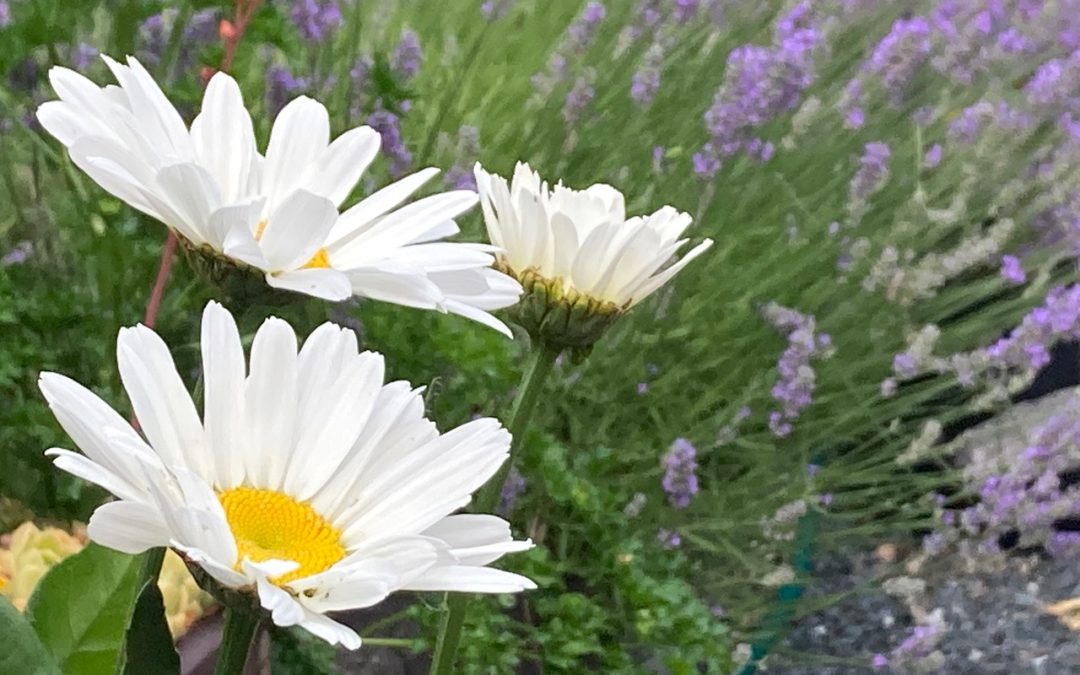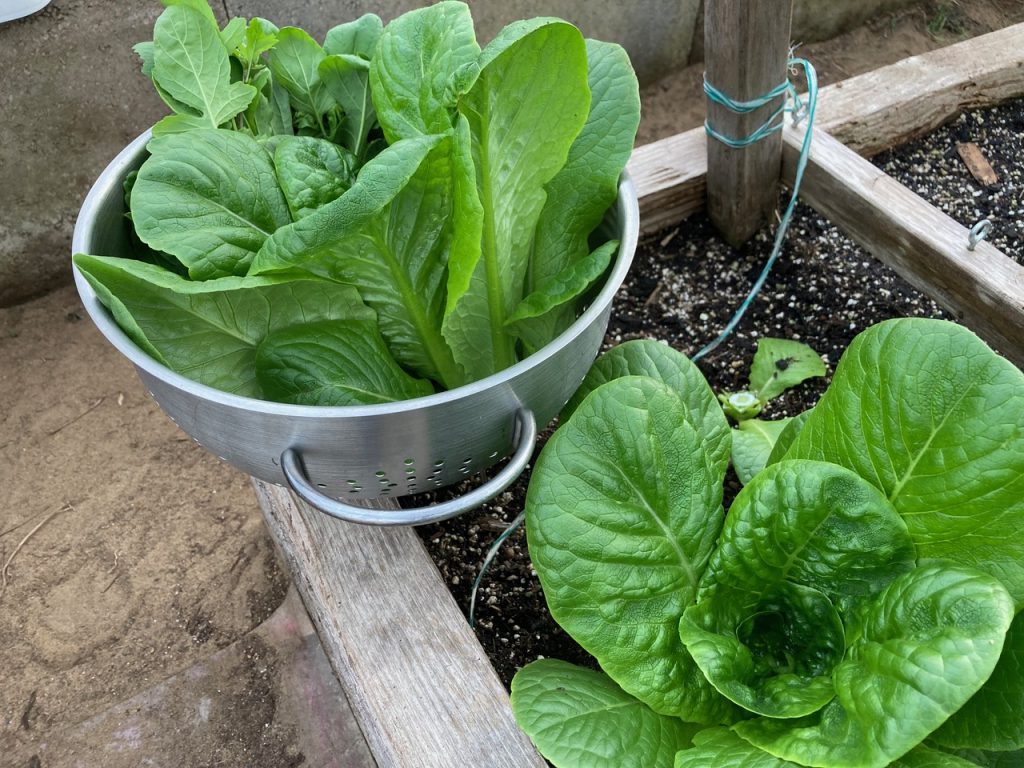
Lettuce harvested from your own garden will need to be washed several times because it will harbour both beneficial and not-so-welcome bugs like slugs. And just in case you didn’t know this, farmers triple wash their lettuce before you buy it!
I am washing lettuce when I see a smallish “worm” on a leaf. Not a slug – that is usually a greyish-brown colour. The insect on my lettuce is white to clear-bodied, with black inner organs showing through the skin.
The bug is about 1/2 an inch or 1 cm in length. I decide it is a “good guy” so instead of washing it down the sink I take it outside and place it on a tree leaf where I have seen the shiny sheen of aphid pee indicating an aphid outbreak. It is summer and aphids abound so this is the time to be grateful for the beneficial bugs who are finally catching up. The “good bugs” who eat or parasitize aphids and keep their numbers in check.
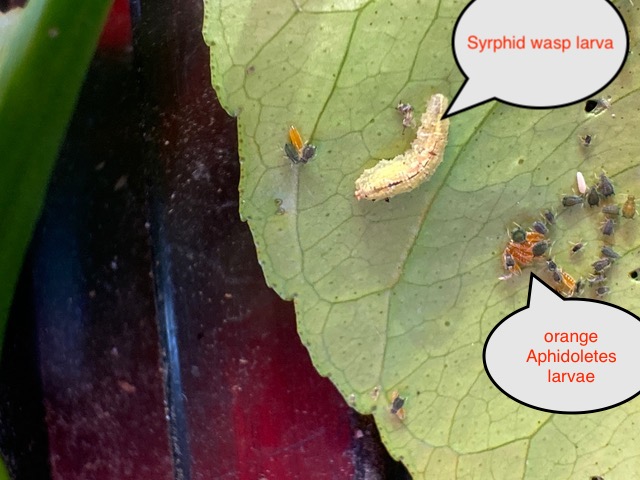
Aphids are a nuisance but if it wasn’t for aphids where would the “good bugs” dine out?
Outside there are a few plants full of aphids. Well, not full. Aphids are mostly focussed at the ends or leaf tips of plants where there is more sweet sugar and plenty of nitrogen or protein building blocks. But as I study a few plants I spot friends among the foes. Aphid predators and parasites have arrived to help me. And just in time. I am thrilled to welcome the good guys back into my garden.
So this is how it works: Weather, like continuous spring rain or a heat dome, affects plant health. A lack of nutrients, sprays of any kind and other problems such as bad soil causes stress on plants. The plants send out stress signals letting the creatures of the world know things are going wrong – and the “bad guys” suddenly appear where there is trouble. Aphids, the “bad guys”, lay live young so they don’t even have to find a mate to start reproducing in massive quantities and – like Covid-19 – the populations of aphids grow exponentially. That means very fast.
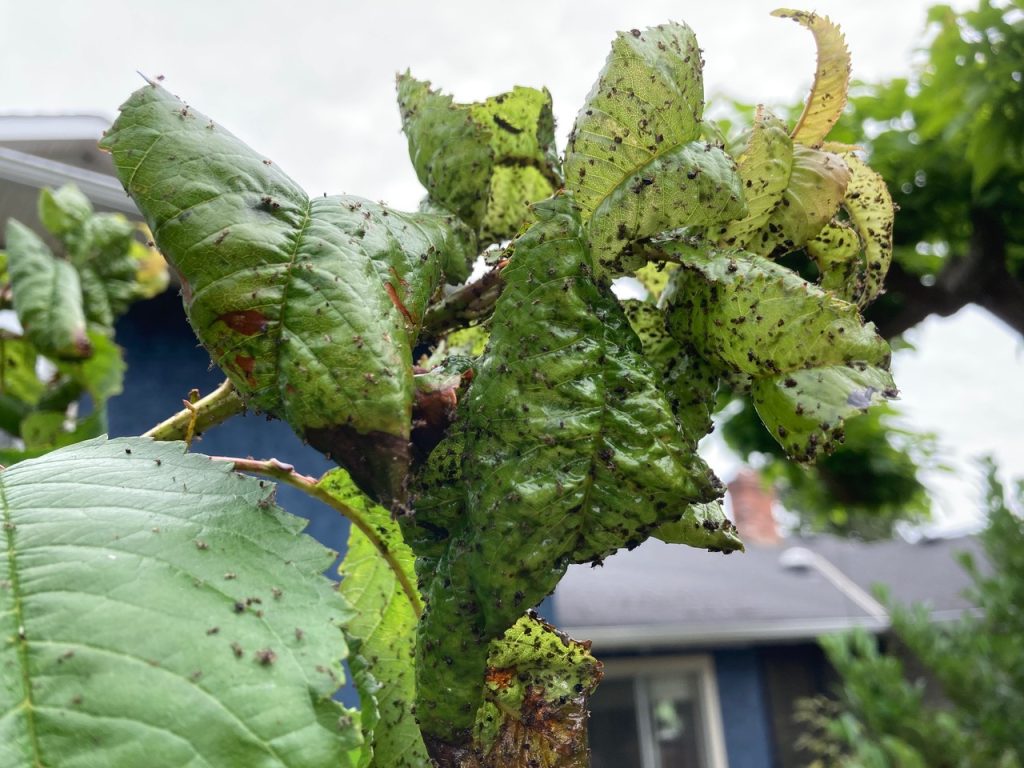
Aphids gather on plant tips and reproduce in exponential numbers
Aphids may have overwintered on your plant or may just show up when they sense the plant is in trouble. Sprays of any kind, including mixtures of oils and soaps are contact killers and they are indiscriminate. They kill everything they contact. These sprays, even if they are homemade, are considered broad spectrum insecticides. They knock back the problem critters and the aphids but, unfortunately, they also kills the beneficial insects. Some estimates suggest the aphids are able to rebound and build up their previous populations in just a few weeks. The beneficial insects are not so quick to respond. In one talk I heard presented by professor and entomologist Dr. Ken Fry of Olds College, he mentioned populations of beneficial insects can take up to five years to rebound after being knocked back with sprays.

Slugs are usually tan or brown and they leave a slimy trail on the ground and on plant leaves where they travelled at night. This pair of slugs is about to mate.
Signs of Trouble:
There are some clear signs of pests gardeners need to be aware of. A slimy trail on a plant plus some missing leaf parts is a sign slugs have been at work. Shiny leaves could be a sign of a really healthy plant. But if the leaf is shiny and sticky, this is a sign of aphid pee (the sweet product expelled by aphids as they sip sweet sap from plants is so sticky.) A secondary problem growing on the leaves with aphid pee: sooty mold fungus. When a leaf is sticky and then black you have clear signs of aphids.
Another sign of trouble is a tiny hole left in the leaf. You may not actually see the problem but you see signs of the problem: the tiny holes. Clearly something is going on. In a cherry tree, either ornamental or edible, small holes are a symptom of shot-hole fungus. On potato and tomato leaves, tiny holes are signs of flea beetles attacking and eating the foliage. You may also, but not always, see the tiny shiny black flea beetle eating the holes. Flea beetles will not kill big plants but they can decimate tiny seedlings.

Tiny holes in potato leaves are a sign something has been over for dinner. In this case I suspect Flea beetles because potatoes are very often attacked by these tiny beetles.
Experienced gardeners shoot a strong spray of water onto plant leaves and into the canopy on a weekly basis. On a larger properties this is impractical. Instead, farmers monitor insects with yellow sticky traps and then buy or try to attract beneficial bugs.
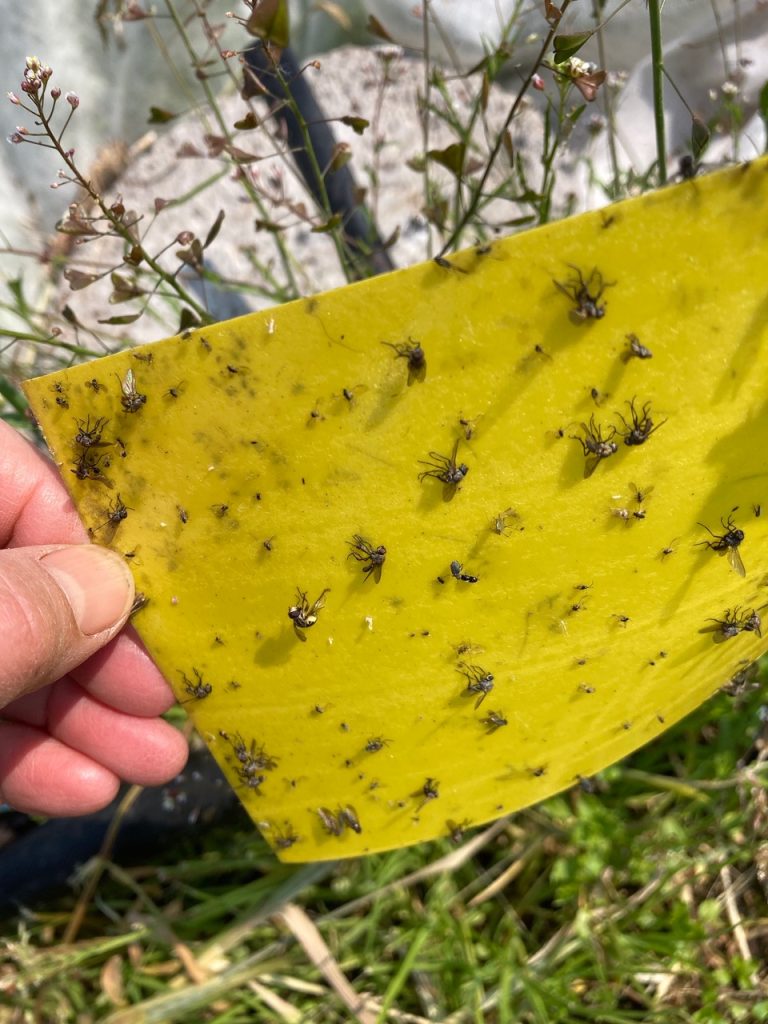
Bugs are attracted to the colour of yellow sticky traps and once they check them out – well they are stuck. This is a good way to see who has been visiting your garden and I use these traps in my greenhouse.
Buying Bugs
Sometimes controversial, the purchase of bugs is a common practise among farmers. The purchase of bugs is based on inspections and on-farm monitoring. This continuous review of both good and bad guys lets farmers know the best time to apply commercially available bugs for biggest impact.
Some beneficial bugs do go off the rails and a ladybug introduced in the late 1800’s to control aphids on citrus in California is one if the good bugs gone bad. The Harlequin Lady Beetle has become a pest because, like frat boys, they get together in the fall in large gatherings. They are also voracious biters and they bite both friend and foe so watch out. Populations have boomed across North America and these “good guys” are now considered pests in some areas because they congregate and they bite people as well as aphids. No longer available for import, these beetles are a good reminder that we have to be careful when playing God. In my garden, I just leave them be because they eat aphids. Commercial sources of other beneficial insects allow you to find a supplier close to you to control aphids and other pests.
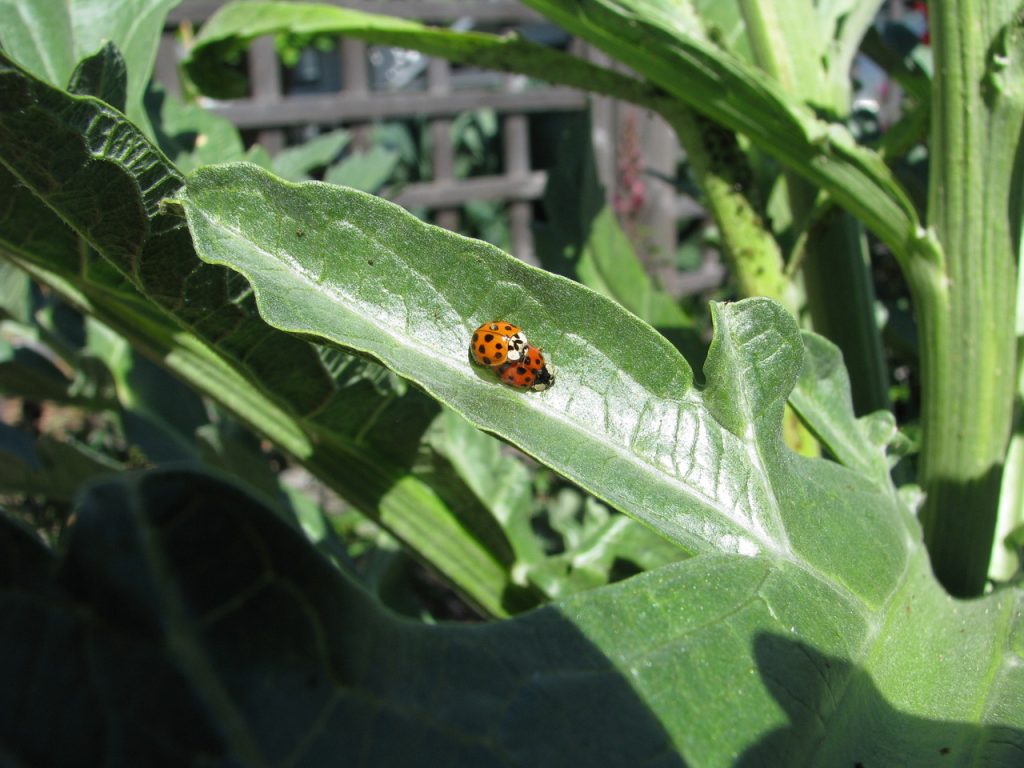
The harlequin Lady Beetle was once introduced to eat aphids. It is easy to tell it apart from other lady beetles because of the distinctive white W marking just below the head.
Attracting Bugs
The first insects at the aphid party in my yard are the small parasitic wasps that lay single eggs into aphid bodies and as the egg hatches and grows, it kills the aphid. This dead aphid looks like a party balloon because among aphids it is much larger, it is brown instead of green or yellow or black, and it has a small exit hole where the parasite emerged to head out and lay eggs in other aphids.

The small brown “puffed up” aphid has been parasitized by the Aphid Parasitic wasp. Each egg laid can only infest and kill one aphid at a time
The worm-like larva I found on my lettuce is a fantastic and voracious eater called the syrphid wasp larva. It is laid as an egg by a hover fly (also called a Syrphid wasp) and it moves in a fan-like fashion eating aphids as it moves across a leaf. I have seen heavily infested leaves with a clean wind-shield wiper pattern near the feeding end or head of the syrphid wasp larva. Nice work if you can attract them. Adding flowers to your garden helps you attract Hover Flies, the parents of all the little syrphid wasp larvae shown below. Another predator is Aphidoletes (see labelled photo above.) The larval stage is a legless orange larva (a maggot really) and it is often seen among colonies of aphids. It is much smaller than the Syrphid wasp larva.

The syrphid wasp larva is a large predator,with black inner organs showing through pale skin. It grows and may eventually get a cm. or longer.
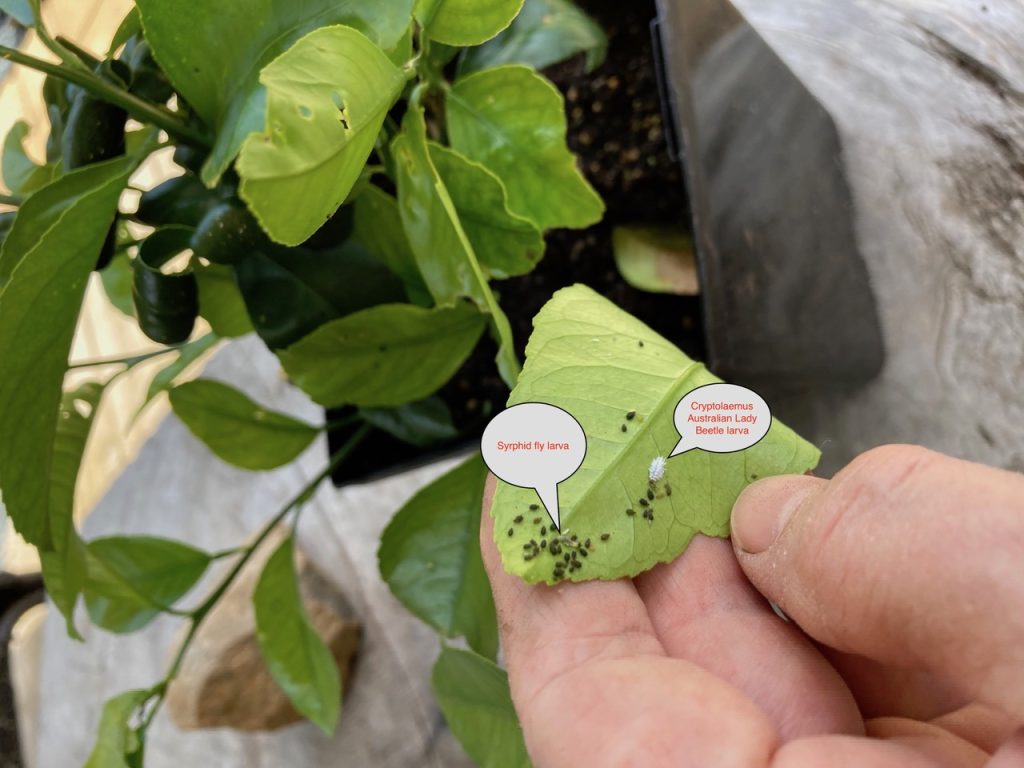
Two aphid predators are shown on this leaf: syrphid wasp larva and Cryptolaemus (Australian Lady Beetle). This is a common event because if you have loads of aphids it makes sense to have more than one predator.

Another shot of both a young Syrphid wasp larva (near my thumb) and a Cryptolaemus larva near centre of leaf with a white outer coating which makes it very easy to identify.
Flowers, especially herb flowers such as cilantro or multiple blooming plants like Alyssum, attract the small wasp-like adult Hover Flies or Australian Lady Beetles to your garden with their offers of pollen and sweet sugary nectar. And then, once fed, the adults find patches of aphids and lay eggs among the thriving aphid hordes so as the larvae hatch, dinner is available.

A cheap magnifying lens or a more expensive hand lens with a light are valuable tools to identify both good and bad bugs.

Daisies attract beneficial bugs with their massive yellow centres that are full of protein-packed pollen. Other smaller blooming plants like lavender also feed beneficial bugs.
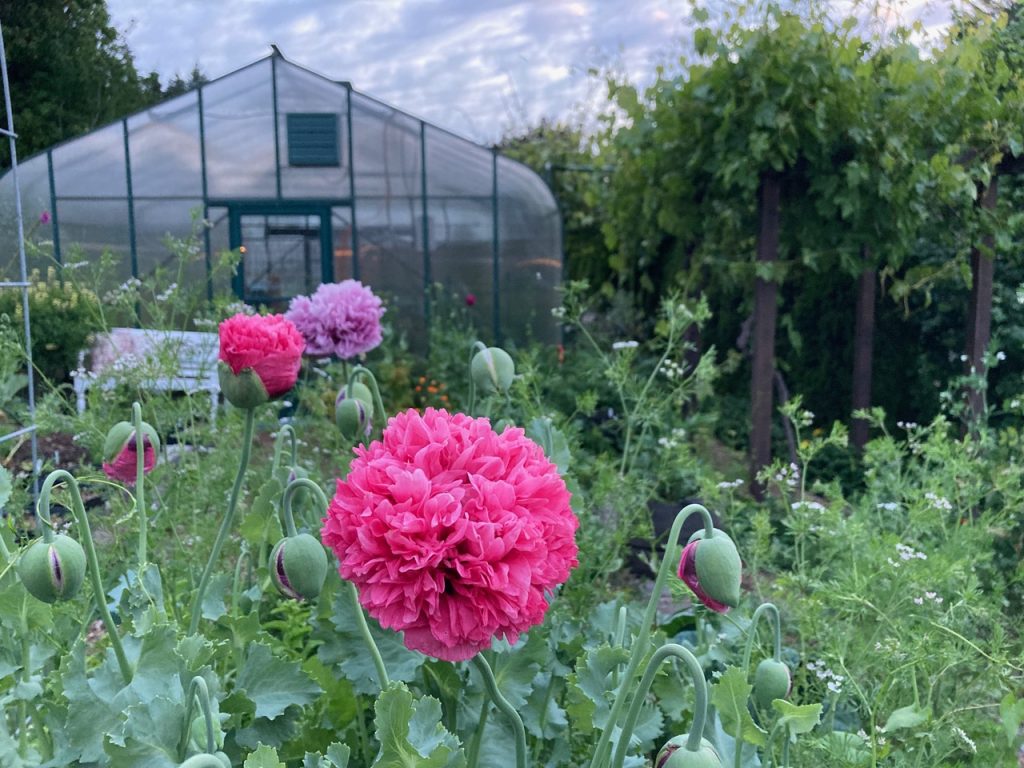
A garden filled with ever-changing flowers including the very tiny blooms of the herb cilantro will feed the adult pollinator bugs looking to find aphid colonies in your garden so they can lay eggs and feed their young.
Being Careful Not to Disturb the Balance
A busy restaurant will tell you when it is fully booked. There is nothing this simple in the garden. Flowers advertise food availability and draw in beneficial bugs. More than one kind can appear all at once and the earliest drive-by pest parasites are likely to show up first, individually attacking aphids one at a time. But once the pest populations make a big splash and completely cover leaves, the predators will appear en masse and lay their eggs to take advantage of the feast.
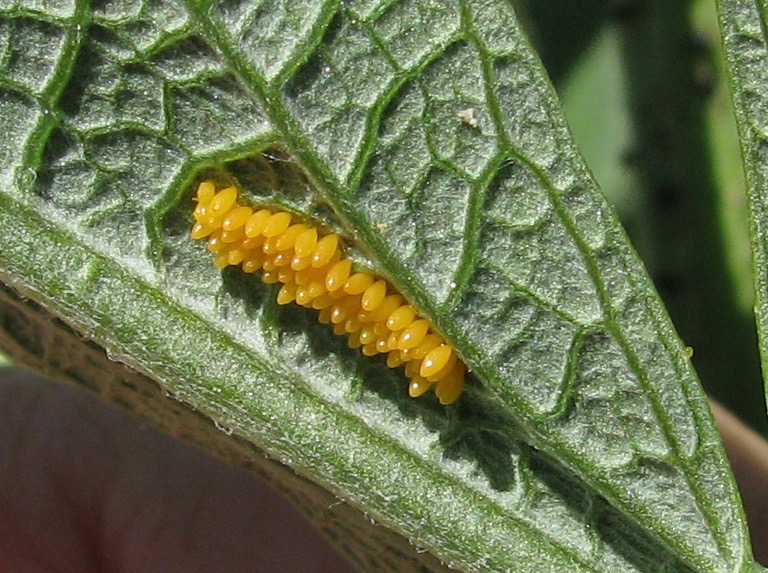
Ladybug eggs are laid in clusters on the undersides of leaves. Make sure to protect these eggs and leave them to hatch. It is the hatching larva that eat hordes of aphids.
Remember, sprays kill off all the beneficial bugs and give pests a chance to quickly replenish their stocks so don’t try to control aphid populations by yourself. You simply are not smart enough to manipulate nature. Instead of trying to control what is going on, just look for signs of pests and actual beneficial bugs. Also, make your garden welcoming to the good bugs by adding loads of flowers and a water source. If you have flowers in pots you can move them to sites with aphid outbreaks to draw in the good guys. Or if you have symptoms of problems like flea beetles just keep the plants healthy with plenty of water and fertilizer so plants will hopefully outgrow the pests.
The job of the gardener is to keep plants healthy and stress-free. The job of a pest is to find weak plants, multiply quickly and take down weak plants so stronger ones can grow. The job of the parasite or predatory insect is to reduce the pest populations so that the plants are brought back into balance with neither too many nor too few insects. The trouble begins when plants are neglected or when a gardener thinks they can control insects just with sprays.
The goal is to reach a balanced harmony between plants and pest and to keep plants as healthy as possible. If you fall into the trap of spraying, then you will throw out the baby with the bathwater as the beneficial bugs are killed along with the pests. The insects that help us are the baby. Nurture them with flowers and patience and care so you will succeed!
